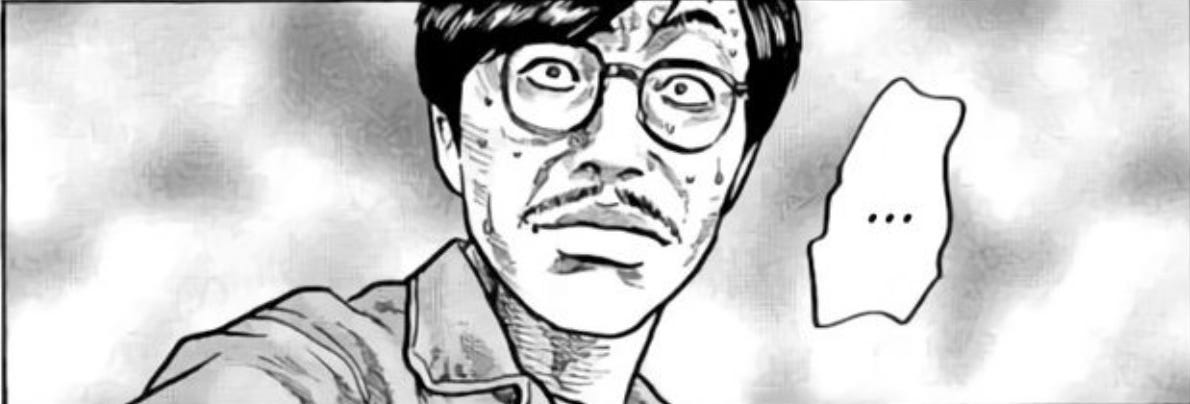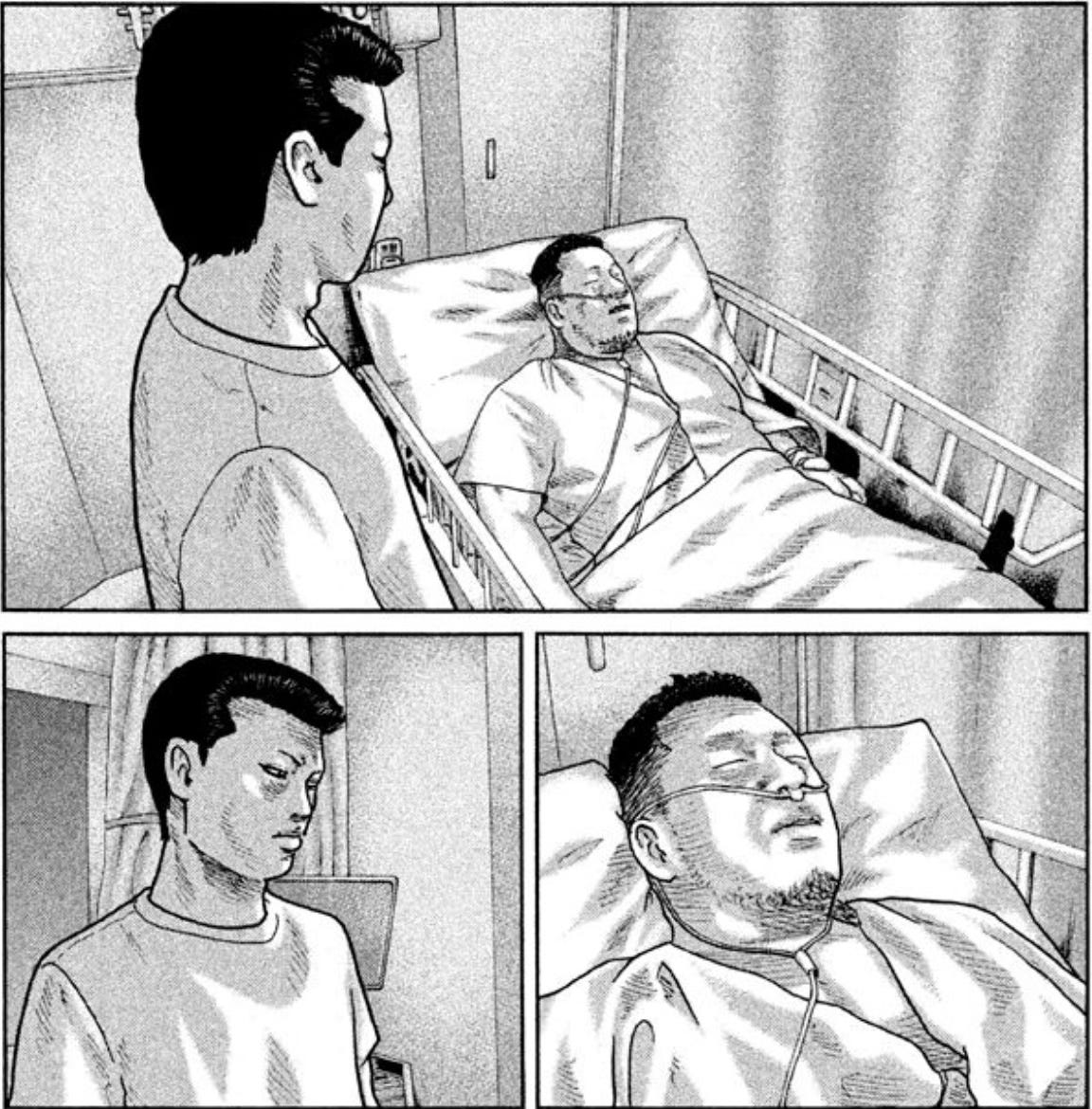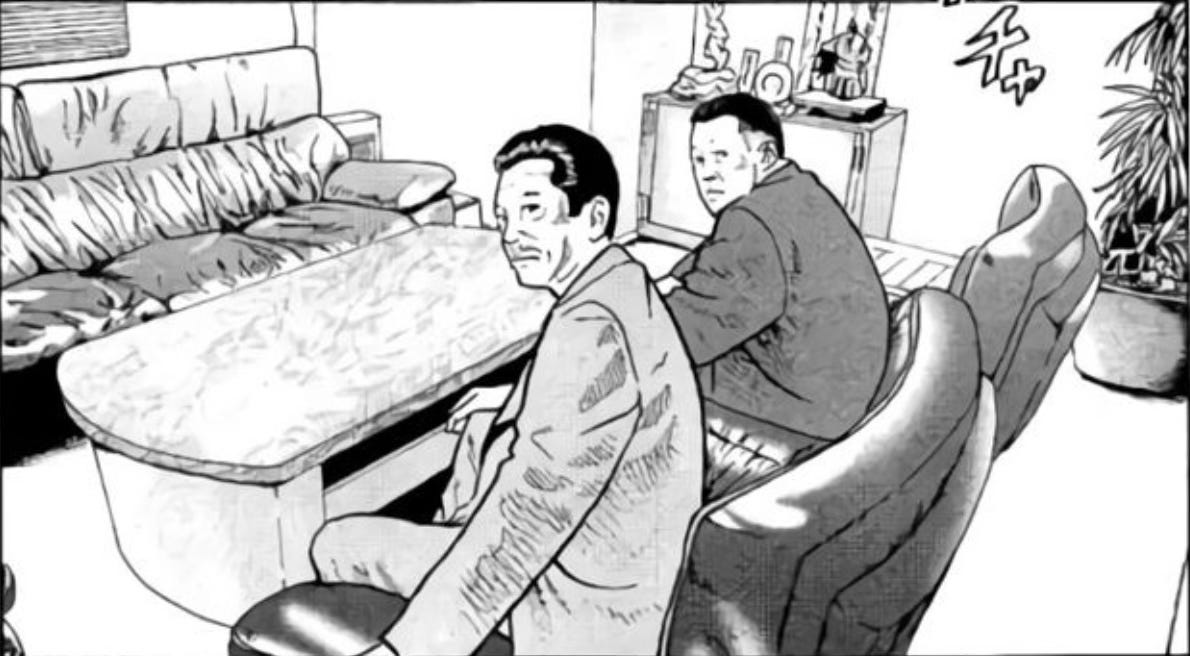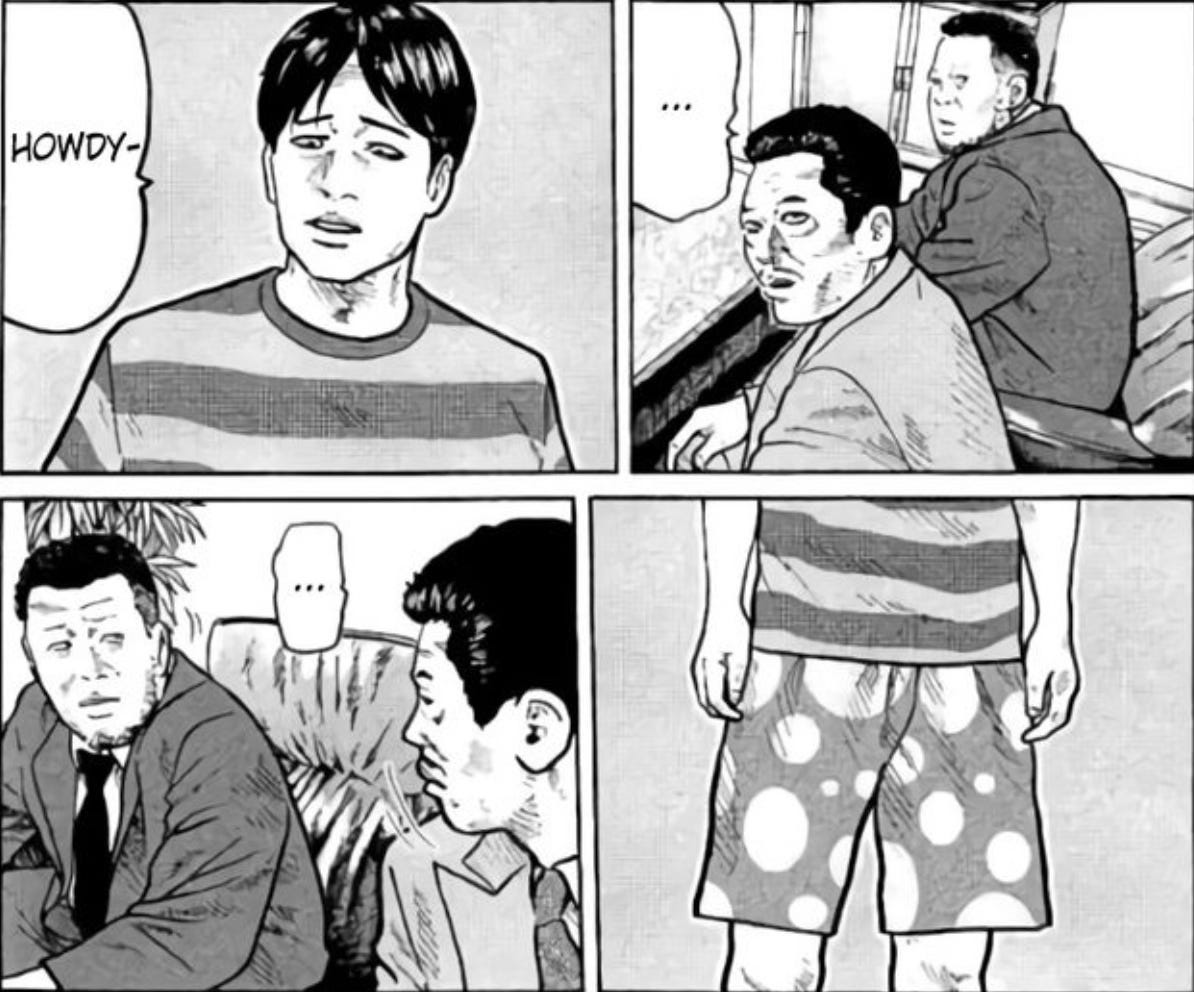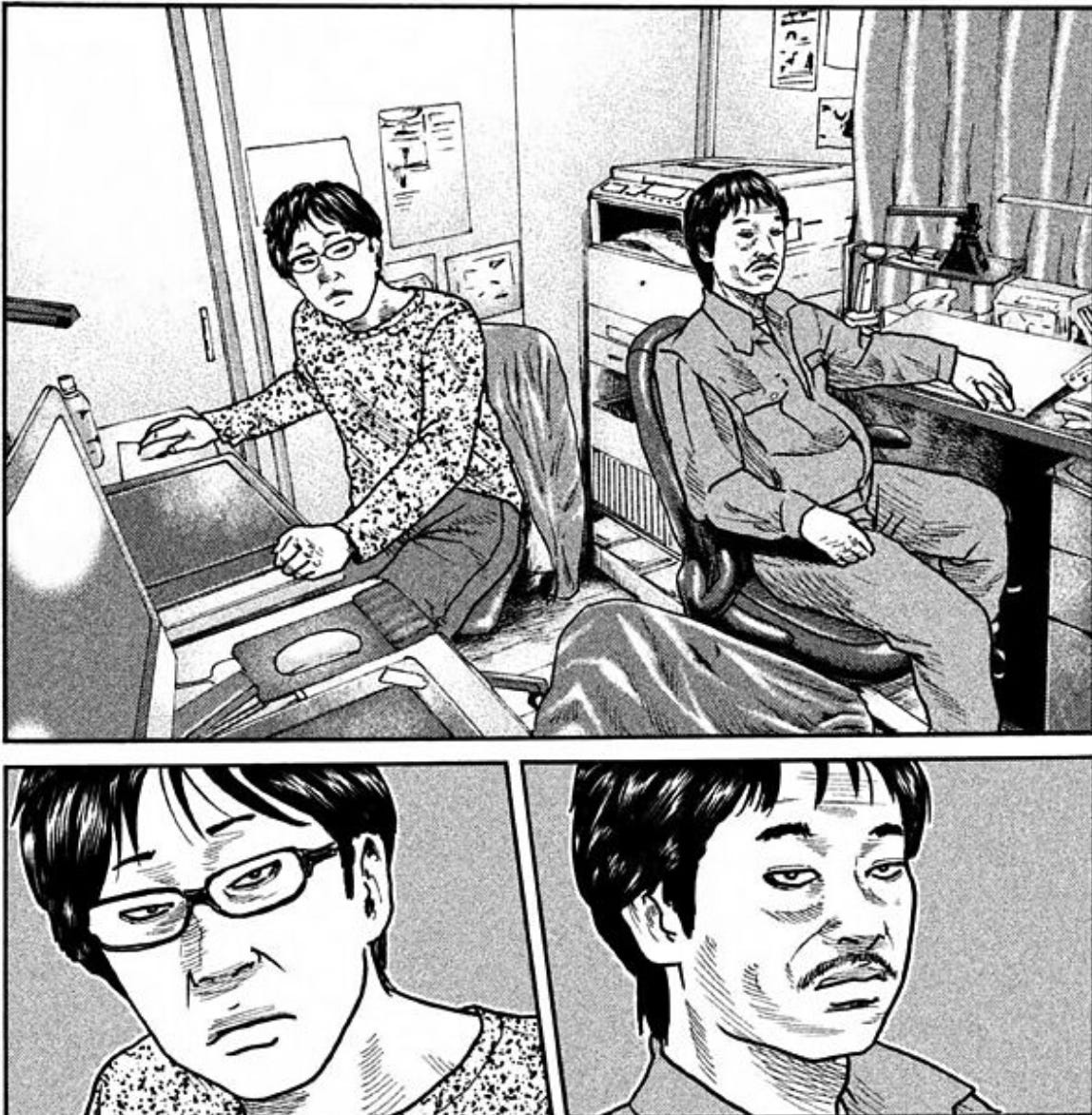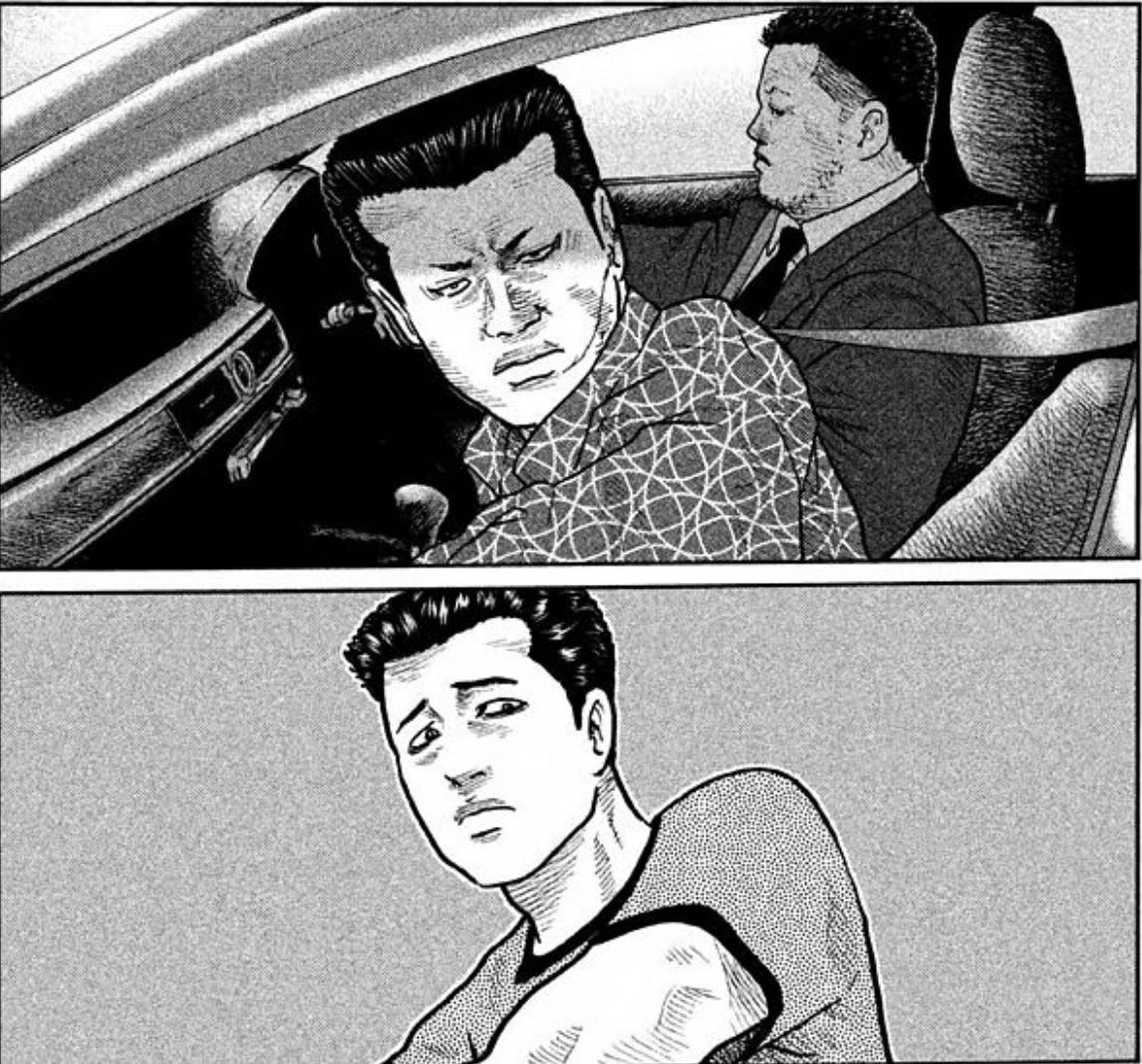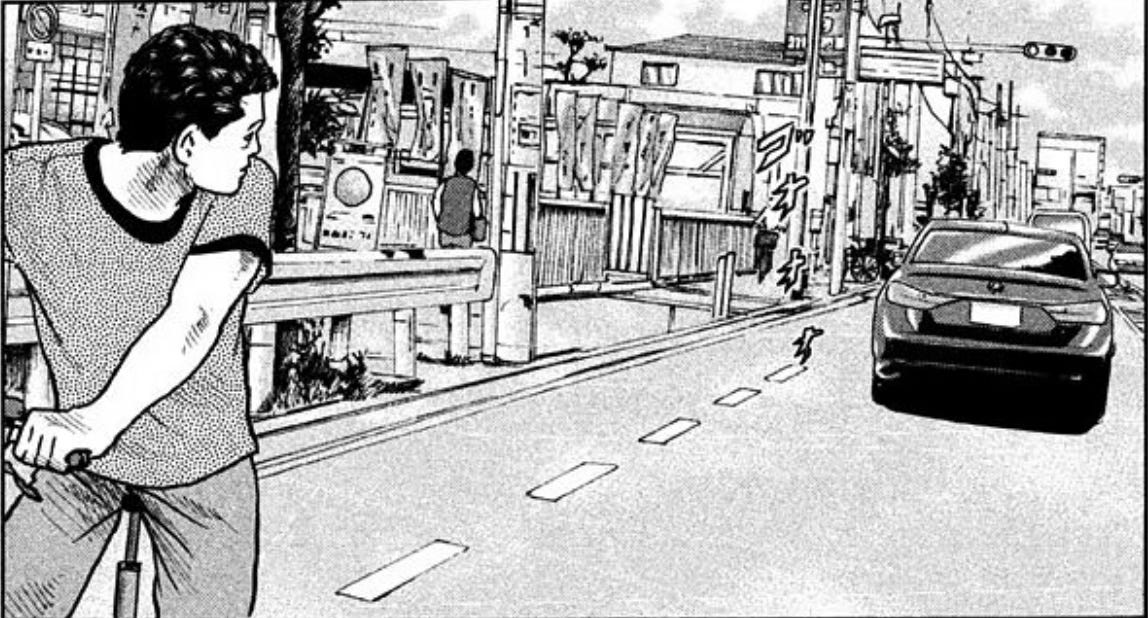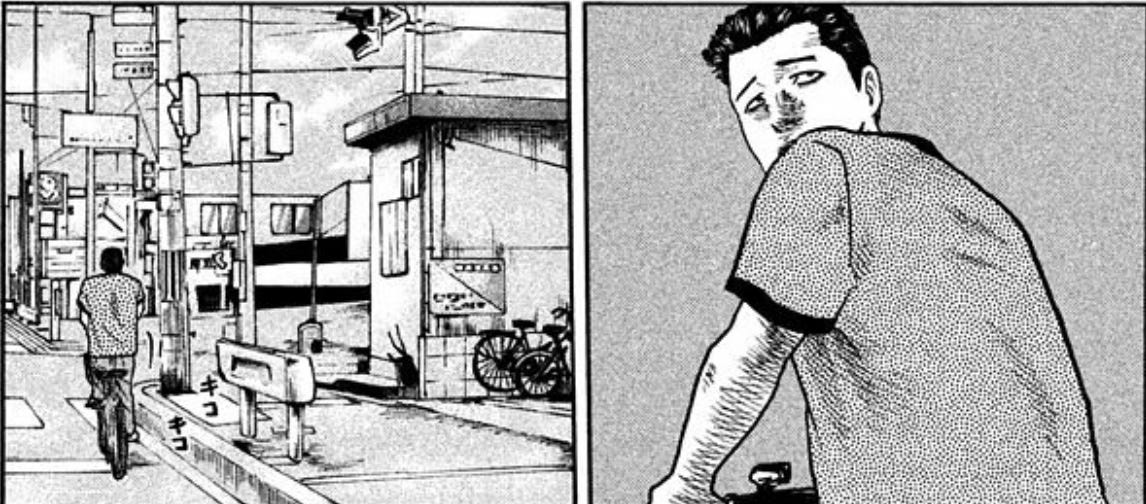Preface!
When I read the description for The Fable, I thought, “oh, like Sakamoto Days and The Way of the Househusband, I’m in.” It’s only like those two in concept—a hitman laying low, trying to stay out of the spotlight.
But the tone? The tone is completely different, despite being just as hilarious, if not more so. It’s subtle—and we know how much I adore subtlety—and the character work is incredible. However, the peak of its hilarity is plot-based. It’s situational. The way a scene plays out, the way a character faces another—it’s all intentional, and it’s so self-assured. So much so that the genius mangaka behind it, Katsuhisa Minami, has such confidence as to lean into the tone of the piece, to bring out every scene even more, to force you to linger.
I love this series, and I just found out that the anime is streaming, so if you need me, that’s where I’ll be.
Preface over.
One of the most difficult adjustments I had to make when I started writing graphic novel scripts was learning how to use silence. When writing prose, which I’d been writing for literally all my life, there is no silence. Even if you write “and then there was silence,” it’s still not silent in the reader’s head. They still have to hear that it’s silent to know that it’s silent and, now that I’m thinking about it, that kinda defeats the purpose.
So when it came to writing scripts, I felt a tad uneasy not including dialogue or narration in panels. I felt like it wasn’t allowed. It wasn’t until I started working with my mentor, Minh Lê, that silence became an option. He challenged me to use more silent panels, to lean into the framing, the expression, the scenery more than I had been.
And he was a great example. He has a graphic novel called Enlighten Me that’s steeped in silence. A family goes to a literal silent meditation camp. It’s a case study in silence if ever there was one.
Once I started working with silence, I began to see more and more how much it could be wielded as a storytelling weapon. How you can prolong the reader’s stay in a scene, or draw out the emotion of the characters involved. But never, never have I seen it wielded as effectively and as diversely as it is wielded in The Fable.
The Fable is a master of the stare-off. Characters looking at each other in all sorts of situations. Sometimes across the table, sometimes passing each other on the street, anywhere, anytime, you could be in store for an epic stare down.
Which may not sound all that special, but! what makes it special is just how easily Minami uses a character’s face to convey a different emotion or feeling. I have seen stare downs that are hilarious, stare downs that are tense, that are confused, revelatory, you name it, The Fable conveys it with nothing more than a face and a situation.
Some examples.
This silent stare-down…
…conveys tension. The masked man (spoiler: it’s The Fable), hasn't even lifted his gun yet, but the mustachioed man sweating out his ellipsis has. So why then is he the one quivering? It’s all in the atmosphere. The tension is being pushed outward by the mask and soaked inward by the mustache. Just look at the eyes.
This moment of silence…
…conveys concern, but also tension. These are two former friends, yakuza mates, but the man in the hospital bed has been the second-in-command for the past fifteen years, while the man standing over him has been in prison for the past fifteen years. You can practically feel the complexity of what the man standing is feeling. Concern for his friend, but frustration that this is what the yakuza have become.
This silent stare down (please excuse the “Howdy)…
…conveys confusion. And is also hilarious. Here’s this hit man who they just ordered to get new clothes to blend in, and he gets stripes and polka dots. That’s a ridiculous situation that is going to confuse even the people who gave the order. But it also conveys the personality of The Fable that he would choose such mismatching clothes, and feeds into this notion that, aside from killing, he is rather helpless.
And you bet the two yakuza could have had this revelation as a quiet conversation, or even through internal narration. I mean, manga is loud. They do that kind of thing often, checking in with every character involved in a scene to hear their thoughts. Here, you don’t need to hear it, you can feel it.
This silent stare down…
… is similar to the last one, but I brought this one up because it shows just how committed Katsuhisa Minami is to the bit. Same as the previous stare down, Minami shows the stare, and then zooms in on each stare, in silence. It forces you to linger in the moment even longer, to really feel the mood.
And the best of all (thus far anyway, I’m not done yet), is when Minami conveys all three, as seen in this lengthy silent stare down—
I mean seriously, can’t you feel the tension? But there’s also confusion, because our poor guy The Fable is on a bike, he doesn’t know who this guy staring him down is, even though he knows the driver. It’s also kinda hilarious though, but—and this is a big but—only because there has been such a commitment to silence in hilarious situations that this more or less becomes hilarious by proximity. Since practically every other silent stare down has humor imbued in it, this one inevitably does too.
Or maybe it’s the bike, who knows.
It’s pretty crazy, to think that in a static medium, you can create an entire atmosphere with nothing more than a face or two, but as I’ve said before, it’s not just in using silence, it’s how The Fable leans into it, maximizing the silence for dramatic and/or comedic purposes. In prose, you’d have to set up the entire scene, describe the situation, outline the arc of each character’s brow line, overtly write something like “moments passed, minutes even,” and sure, it may work, but the feeling—the sound—is different when it’s as effective as what The Fable accomplishes.
One of the reasons I had so much trouble with silence is that I’m a writer who relies on voice. Bet you couldn’t tell. So to me, it felt like silence was belaying voice, or missing an opportunity to drop a joke or an observation. Also, I’m so glad I got to properly use the word belay, that’s long been a goal of mine.
The Fable taught me that silence is voice. And it’s one of the strongest voices, at that. Well-wielded silence speaks louder than words ever will. There’s a reason so many famous thinkers and artists have said quippy and wise things about silence. Let’s have a sampling, shall we?
“It is better either to be silent or to say things of more value than silence. Sooner throw a pearl at hazard than an idle or useless word; and do not say a little in many words but a great deal in a few.” — Pythagoras
“Silence is the most perfect expression of scorn.” — George Bernard Shaw
“A sage thing is timely silence, and better than any speech.” — Plutarch
“The silence, often of pure innocence, persuades where speaking fails.” — William Shakespeare
“Remember not only to say the right thing in the right place, but far more difficult still, to leave unsaid the wrong thing at the tempting moment.” — Benjamin Franklin
“Silence is an answer to a wise man.” — Euripides
You get the idea. Silence is a powerful tool that doesn’t work in every medium. I mean, now that the movie A Quiet Place exists, silence has a foothold in the movies, but good luck finding another blockbuster built on silence. Movies and TV are loud, prose is loud, music is loud. This whole damn world is so loud that it makes silence a rarity.
It’s just hard to find, which is perhaps why, every time I find it, it’s such a marvel. Comics and manga are the best medium for seeing the power of silence. And you cannot—and this is a challenge, mind you—find a series that wields silence like The Fable.
Hey, creative writers: Take a scene you’ve written recently, or start a new one. Pick two emotions, and script (or write prose for) how to convey those two emotions without words. If you’re drawing, great, draw it. If you’re writing, use body language—leaning back could indicate shock, shrugging indicates confusion, etc.
Hey, fans of The Fable: Perhaps the most amazing part of all of this is that the artwork is pretty simple, yeah? The eyes aren’t that defined, but they’re so expressive, yeah? This isn’t really a question, just an observation I want you to riff off. Also I hate the word ‘riff’.





